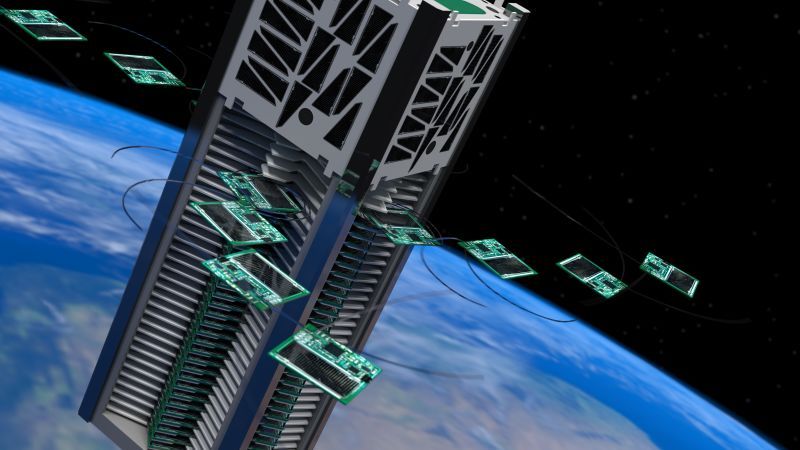Earlier this spring, Russian billionaire Yuri Milner casually announced his intention to develop spacecraft that can travel at up to 20 percent the speed of light and reach Alpha Centauri within twenty years. From the outset, it was clear that no humans would be making the warp jump—the mission will involve extremely lightweight robotic spacecraft. A new fleet of tiny satellites hints at what those future interstellar voyagers will look like and be capable of.
Meet Sprites: sticky note-sized devices that sure look like the result of the Pentagon’s long-anticipated floppy disk purge, but are in fact state-of-the-art spacecraft complete with solar cells, a radio transceiver, and a tiny computer. Later this summer, a Cornell-led project called Kicksat-2 will launch 100 of these puppies to the International Space Station. There, the satellites will spend a few days field-testing their navigational hardware and communications systems before burning up in orbit.
The project’s lead engineers, Zachary Manchester and Mason Peck, are on the advisory committee for Breakthrough Starshot, an ambitious effort to reach our nearest neighboring star system within a generation. (In fact, the potato chip-sized computer Milner held up during a highly publicized press conference in April was Manchester’s own design.) Sprites, and the “chipsat” technology they’re based on, are a step toward that goal of interstellar travel. More generally, they’re an indication of the future of space exploration.
